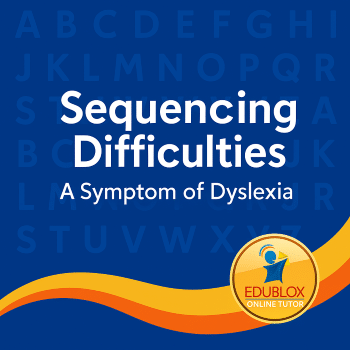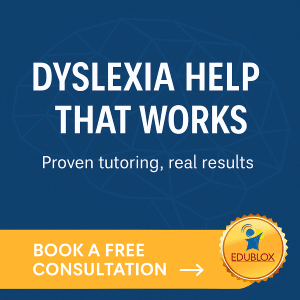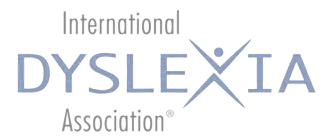
Sequencing refers to our ability to perceive items in a specific order and remember that sequence. When reciting the days of the week, months of the year, a telephone number, the alphabet, or counting, the order of elements is essential.
Many people with dyslexia struggle with sequencing. Dyslexia is a learning disorder that involves difficulty reading or interpreting words, letters, and other symbols, but it does not affect general intelligence.
Because reading and spelling depend on order, sequencing deficits naturally affect these skills. Every word is made up of letters arranged in a specific sequence. To read, one must perceive the letters in sequence and recall what word they represent. A simple change in letter order can turn name into mean or amen.
Studies link dyslexia to sequencing difficulties
Guthrie and colleagues investigated relationships between visual sequential memory and reading in 81 typical and 43 disabled readers. They found significant positive associations between visual sequential memory and paragraph comprehension, oral reading, and word recognition.
A study published in the Journal of General Psychology compared 33 children with dyslexia and 33 controls aged eight to twelve. The dyslexic group performed significantly worse on tasks involving both visual and auditory sequential memory.
Another study, published in the Archives of Clinical Neuropsychology, compared 24 readers with auditory dyslexia and 21 with visual dyslexia to 90 controls. It revealed auditory sequential memory impairments in both dyslexia subgroups and multiple strengths among the good readers.
Dyslexia symptoms and sequencing

The following dyslexia symptoms may reflect sequencing difficulties:
- Letter order errors: Reading felt as left, act as cat, reserve as reverse, expect as except.
- Syllable order errors: Reading animal as “aminal,” hospital as “hopsital,” enemy as “emeny.”
- Word order errors: Reading are there instead of there are.
- Spelling errors: Writing Simon as “Siomn,” time as “tiem,” child as “chidl.”
- Letter omissions: Reading or writing cat for cart, wet for went, sing for string.
.
Children with dyslexia may also struggle to remember the order of the alphabet or number sequences such as phone numbers, months, or days of the week. Some find it difficult to recall the sequence of daily events. Younger children may be unable to repeat longer words correctly, often mixing syllables in words like preliminary or statistical.
Everyday tasks that reveal sequencing challenges
According to BrightStar Learning, certain everyday activities that involve sequencing can also be difficult for children with dyslexia:
- Shoe-tying: This task involves both sequencing and directionality. Many children with dyslexia often struggle to tie their shoes until well into their teenage years.
- Letter formation: They may start and end letters at unusual points because they cannot recall the correct series of pencil strokes. The result may only vaguely resemble the correct form.
- Long division: Solving long division problems requires following a specific five-step sequence for each problem. A child with dyslexia may understand each step individually but struggle to perform them in the correct order, leading to incorrect answers.
Overcoming sequencing difficulties
Edublox specializes in educational interventions that strengthen learning foundations — helping children read and learn faster, spell more accurately, and perform better in math. Our programs improve a wide range of cognitive abilities, including sequencing ability and both auditory and visual sequential memory.
In addition to cognitive development programs, Edublox offers live online tutoring for students with dyslexia, dysgraphia, and other learning difficulties.
Watch the playlist below to see how Edublox training and tutoring can help turn dyslexia around — and book a free consultation to discuss your child’s learning needs.
References for Sequencing Difficulties: A Symptom of Dyslexia:
- Guthrie, J. T., & Goldberg, H. K. (1972). Visual sequential memory in reading disability. Journal of Learning Disabilities, 5(1), 41–46.
- Hornsby, B. (1984). Overcoming dyslexia. Cape Town: Juta and Company Ltd.
- Howes, N. L., Bigler, E. D., Lawson, J. S., & Burlingame, G. M. (1999). Reading disability subtypes and the test of memory and learning. Archives of Clinical Neuropsychology, 14(3), 317–339.
- Stanley, G., Kaplan, I., & Poole, C. (1975). Cognitive and nonverbal perceptual processing in dyslexics. Journal of General Psychology, 93(1), 67–72.
Sequencing Difficulties: A Symptom of Dyslexia was authored by Sue du Plessis (B.A. Hons Psychology; B.D.), an educational and reading specialist with 30+ years of experience in the learning disabilities field.
Edublox is proud to be a member of the International Dyslexia Association (IDA), a leading organization dedicated to evidence-based research and advocacy for individuals with dyslexia and related learning difficulties.



